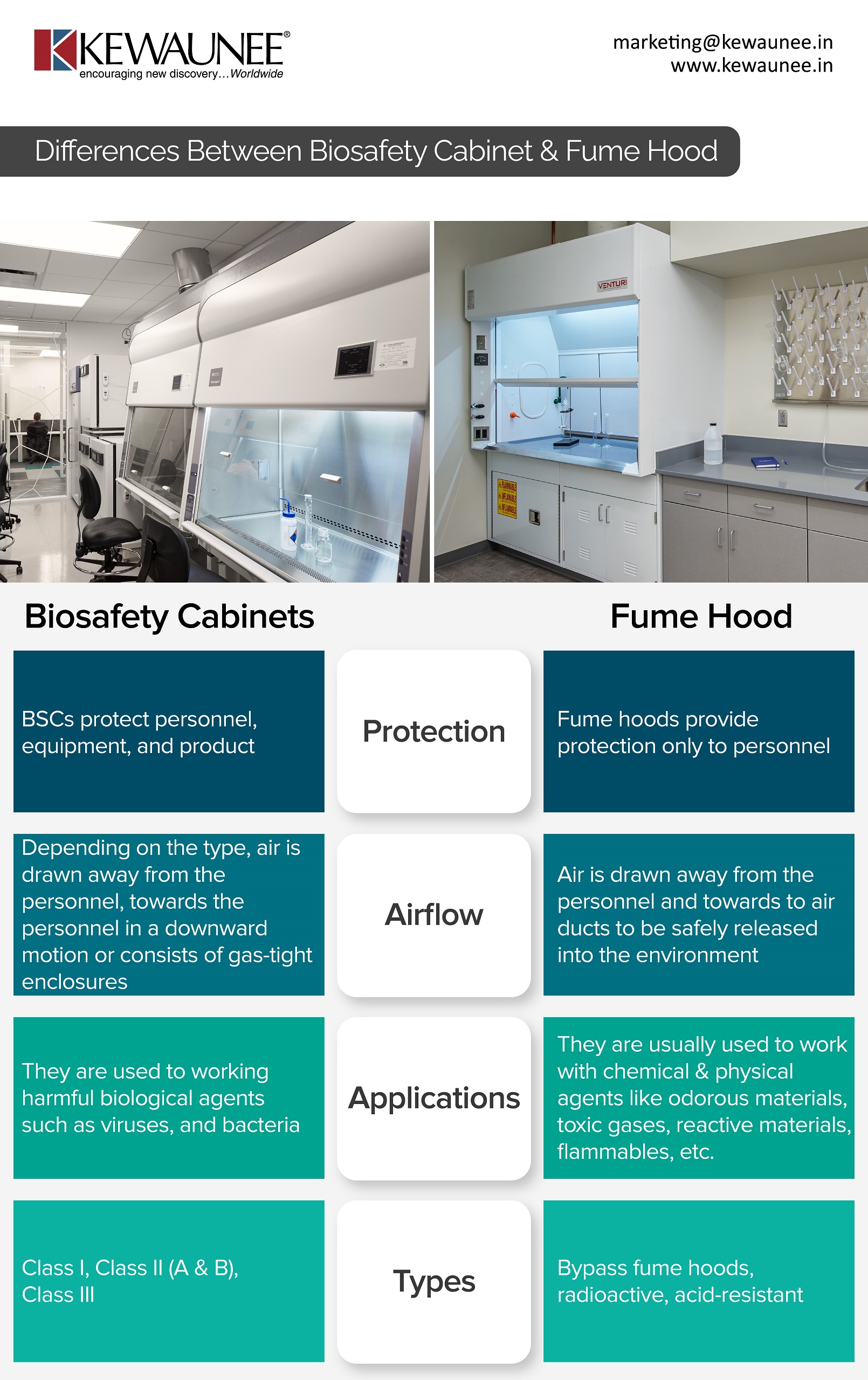Differences Between Biosafety Cabinet Fume Hood
Biosafety cabinets and fume hoods are two categories of enclosures that help laboratory personnel work safely. They are usually used when the reagents or products that are used for the experiments are harmful. Depending on the type, they protect personnel, product, and/or the environment.
At Kewaunee International, we are experienced in creating enclosures that are best suited for your laboratory. Drawing upon our decades of experiences to bring you safe and compliant enclosures that look out for your laboratory personnel. You can view our products here: https://www.kewaunee.in/ventilated-devices.php
| Factors | Biosafety Cabinets | Fume Hood |
| Protection | BSCs protect personnel, equipment, and product | Fume hoods provide protection only to personnel |
| Airflow | Depending on the type, air is drawn away from the personnel, towards the personnel in a downward motion or consists of gas-tight enclosures | Air is drawn away from the personnel and towards to air ducts to be safely released into the environment |
| Applications | They are used to working harmful biological agents such as viruses, and bacteria | They are usually used to work with chemical & physical agents like odorous materials, toxic gases, reactive materials, flammables, etc. |
| Types | Class I, Class II (A & B), Class III | Bypass fume hoods, radioactive, acid-resistant |
Comments are closed.











